The historical heart of the city of Istanbul is located on the tip of a small peninsula, and it’s right here that we can find one of the city’s most impressive palaces.
In this article, you can discover some of the most interesting facts about Topkapi Palace, one of the most important historic structures in the capital of Turkey.
1. It’s located in an elevated area of the Fatih District of Istanbul
The Topkapi Palace is a huge complex of buildings that originally served as the Imperial Palace of the Ottoman Sultans but which has been transformed into a museum in the 20th century.
The palace majestically overlooks the Golden Horn, the Sea of Marmara, and the Bosphorus Strait as it’s located in an elevated location in the east of the Fatih District of Istanbul.
This is in fact the capital district of the city and is home to the most important government buildings as well.

2. The Romans already built a structure in this location
Istanbul has gone by a couple of different names throughout its history and has played a major role in European history. After all, it’s located right on the border of Europe and Asia, a very strategic position indeed.
Byzantium was renamed Constantinople in 330 A.D. and was actually turned into the capital of the Roman Empire by the famous Roman Emperor Constantine the Great. One of his successors in the early 5th century named Theodosius II (401-450) built the Theodosian Walls of Constantinople which protected the modern-day Fatih District.
Fairly recently, a Roman gallery was discovered underneath the First Courtyard of the Topkapi Palace as well. This means that the site of the palace was certainly occupied by structures as well during Roman times.

3. The palace didn’t get its current name until the 18th century
One of the most remarkable facts about the Topkapi Palace is that it was originally referred to as the “Saray-i Cedid-i Amire,” which literally translates to “Imperial New Palace.” This was to distinguish it from the Old Palace which was located in Beyazıt Square in the Fatih District, today the site of the Istanbul University.

The current name of the palace means “Cannon Gate Palace” and was given to it during the reign of Ottoman Sultan Mahmud I between 1730 and 1754, a period in which the palace had already lost its importance but was still used as the imperial treasury, library, and mint.

4. The original palace was built in the 15th century
The exact location of the palace is referred to as “Seraglio Point,” a promontory and a very strategic location to build a palace. This was exactly what Sultan Mehmed II (1432-1481) thought after he conquered Constantinople in 1453, an event that effectively ended the Eastern Roman Empire.
The work on the palace started in the year 1459 and it’s unknown when exactly this original structure was finished, but most probably during the 1460s.

5. The main entrance to the palace is called the “Imperial Gate”
The main gate of the palace leads into the First Courtyard and is referred to as the “Imperial Gate.” This structure was originally completed in the year 1478 but has been decorated with marble in the 19th century.
The street leading up to this gate has been important for a very long time as it was referred to as the “Mese avenue” during the Byzantine era. This was a main thoroughfare in the city and was mainly used as a procession street.
Today, this street is known as the “Divan Yolu” or “Council Street” and it leads directly to the Hagia Sophia before eventually leading to the Fountain of Ahmed III.

6. Suleyman the Magnificent seriously expanded the palace
Even though most Sultans following Mehmed II made alterations to the structure, the main expansion phase of the palace was completed during the reign of Suleyman the Magnificent, the longest-reigning Sultan between 1520 and 1566.
The palace was intended to reflect his growing empire and it eventually grew to an enormous complex with an estimated size of between 592,600 and 700,000 square meters (6,379,000 and 7,535,000 square feet).
The core sections of the complex consist of 4 main courtyards and the Harem.
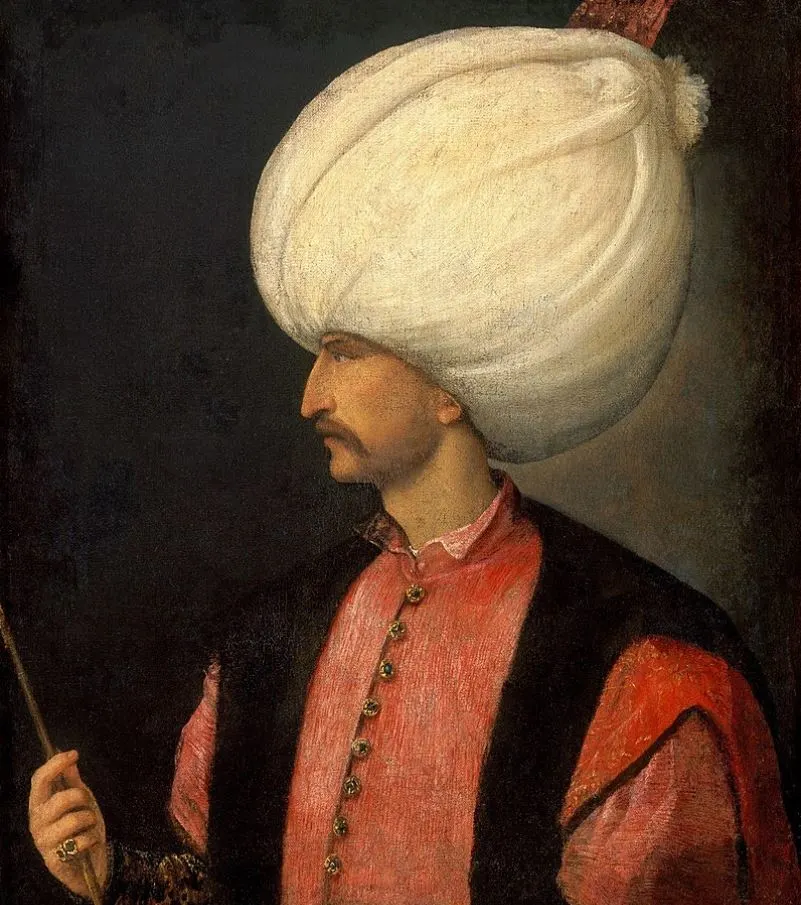
7. It features a Byzantine church that wasn’t converted
One of the most amazing facts about the Topkapi Palace is that even though many of the historical buildings in the First Courtyard have been destroyed, a fascinating church dating back to the Byzantine era has been preserved.
This Byzantine building is referred to as the “Hagia Irene” and is reportedly the first church that was completed in Constantinople, built on the site of a Pagan temple.
The only reason why it wasn’t demolished during the Ottoman era is that the building was used as a storehouse and imperial armory, a function it held until the 19th century.

8. The gate to the second courtyard is quite impressive
One of the most fascinating structures inside the Topkapi Palace is the so-called “Gate of Salutation,” also sometimes referred to as the “Middle Gate.” This gate leads into the Second Courtyard and the actual Palace.
This gate resembles one of the amazing fortifications in Europe or castles in England and the date of construction is remarkably unknown, even though an inscription on the gate mentions 1542.
This gate most certainly resembles the architectural style of the Byzantine era and served as one of the main checkpoints of the palace. Only the Sultan could pass this gate on horseback as well.
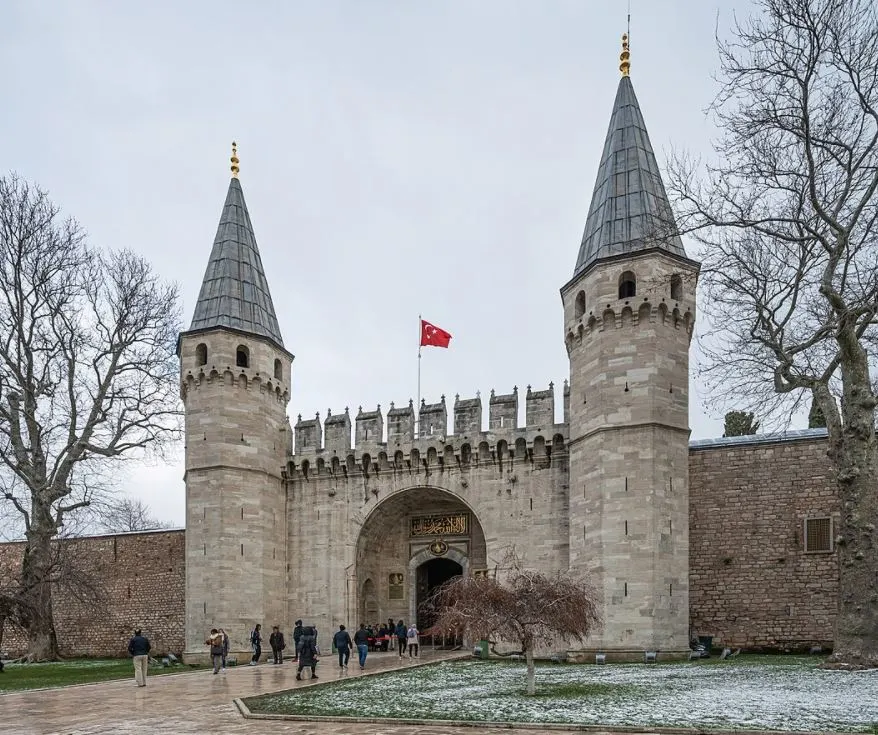
9. The palace featured the largest kitchen in the Ottoman Empire
An immense structure like this required a huge kitchen to serve food. The kitchen features 20 chimneys and was able to provide food for an estimated 4,000 people, prepared by about 800 people working here. This made it the biggest kitchen in the entire Ottoman Empire at the time.
The Sultan clearly enjoyed eating his food using Chinese porcelain as today, a collection of 10,700 pieces of Chinese porcelain are on display in the former kitchen of the Palace, one of the most fascinating collections in the world!

10. The tallest tower is located between 2 important buildings
Even though most of the buildings that make up the Palace complex are relatively low, one structure sticks out and can be clearly seen from the water surrounding the area.
This tower is called the “Tower of Justice” and is by far the tallest building in the complex. It was originally built by Mehmed II in the 15th century and later expanded by Suleyman the Great between 1527 and 1529.
The lantern on top of the tower was renovated during the reign of Sultan Mahmud II in the year 1829, but the other features of this magnificent landmark are the original ones.
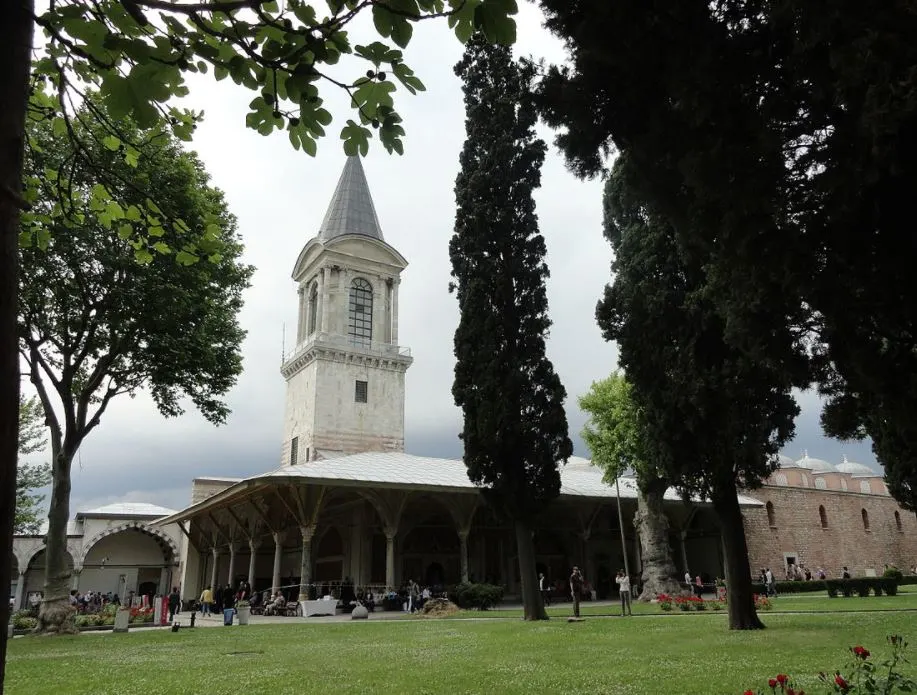
11. The third courtyard is referred to as the “Inner Palace”
To reach the Third Courtyard you need to pass through the “Gate of Felicity.” This gate leads to a section referred to as the “Inner Palace,” an area sometimes referred to as the “Heart of the Palace” as well.
This area features an amazing flourishing garden and is surrounded by several important buildings, including the Hall of the Privy Chamber (also called the “Has Oda”), the imperial treasury, the harem, and the library of Ahmed III.
The layout of this section of the Palace was already established by Sultan Mehmed II in the 15th century and is a quite enjoyable place to roam around in today!
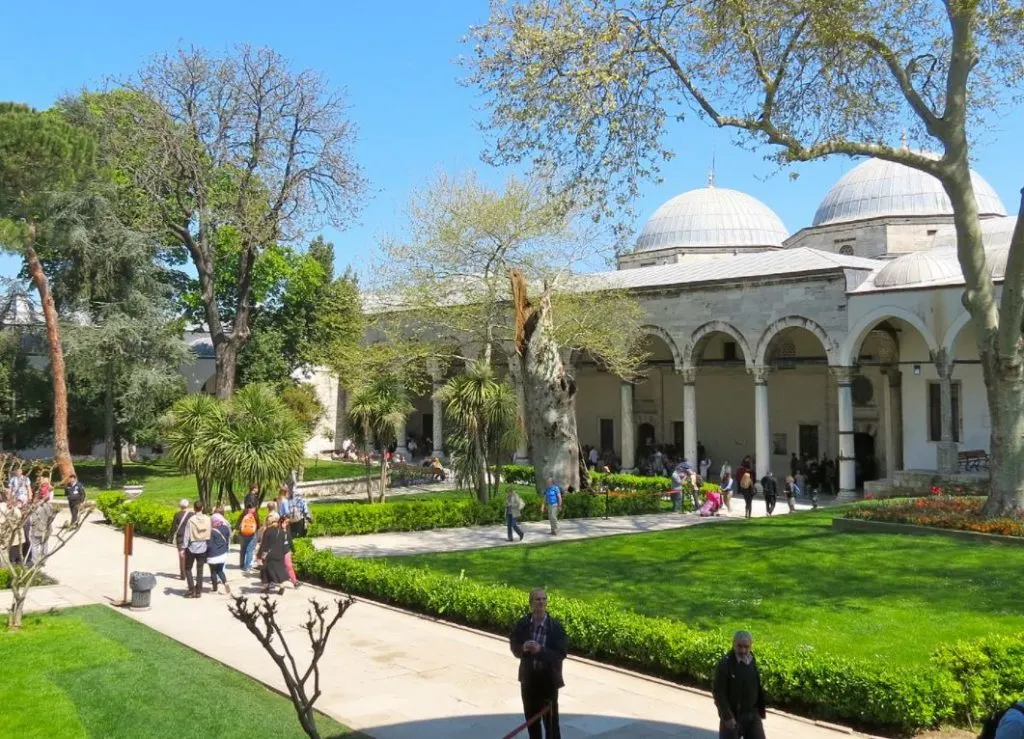
12. The Imperial Harem is a huge structure with over 400 rooms
The Sultans didn’t mess around when it came to the size of their Imperial Harem, a section reserved for the wives and mistresses of the Sultan along with their relatives.
This enormous Islamic structure consists of over 400 rooms and the original version was only completed in the late 16th century. This building continued to expand until the 19th century with multiple courtyards being added.

13. The reception hall is arguably the most impressive room
One of the most amazing rooms inside the Harem is the so-called “Imperial Hall,” also sometimes referred to as the “Imperial Sofa” or “Throne Room.”
This fascinating structure is believed to have been completed in the late 16th century as well and featured the largest and most impressive dome in the Palace.
This hall served as the reception room for the Sultan and the visitors of the Harem.
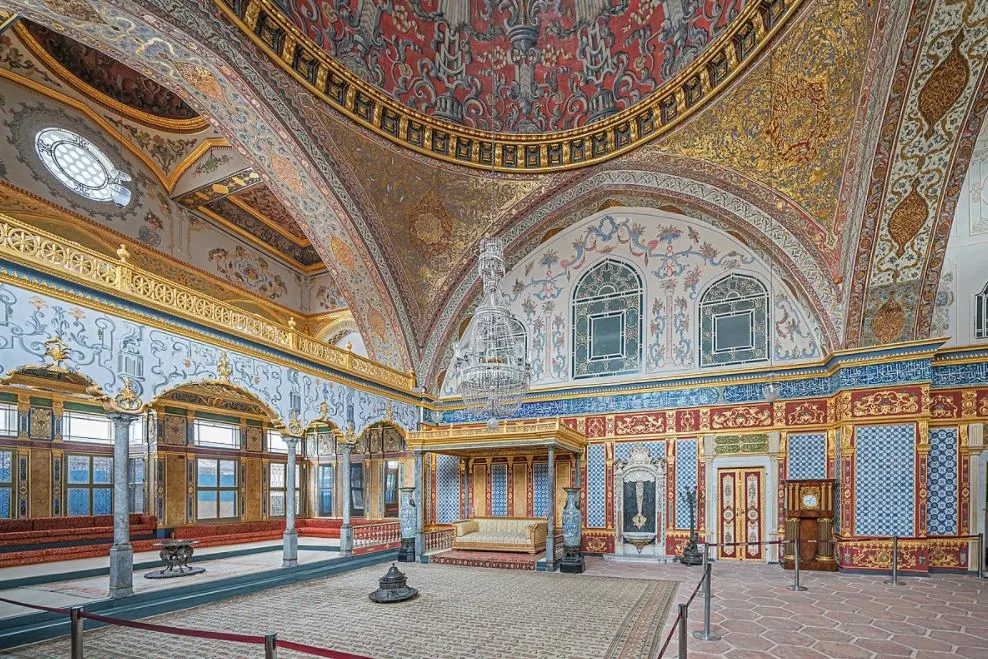
14. This is most probably the least desirable room in the palace
While the reception room was probably one of the most amazing rooms to hang out in, the Circumcision Room probably aroused some other feelings.
This room was completed in the year 1640 during the reign of Sultan Ibrahim I and was solely used for the sacred practice in Islam of circumcision of young princes.
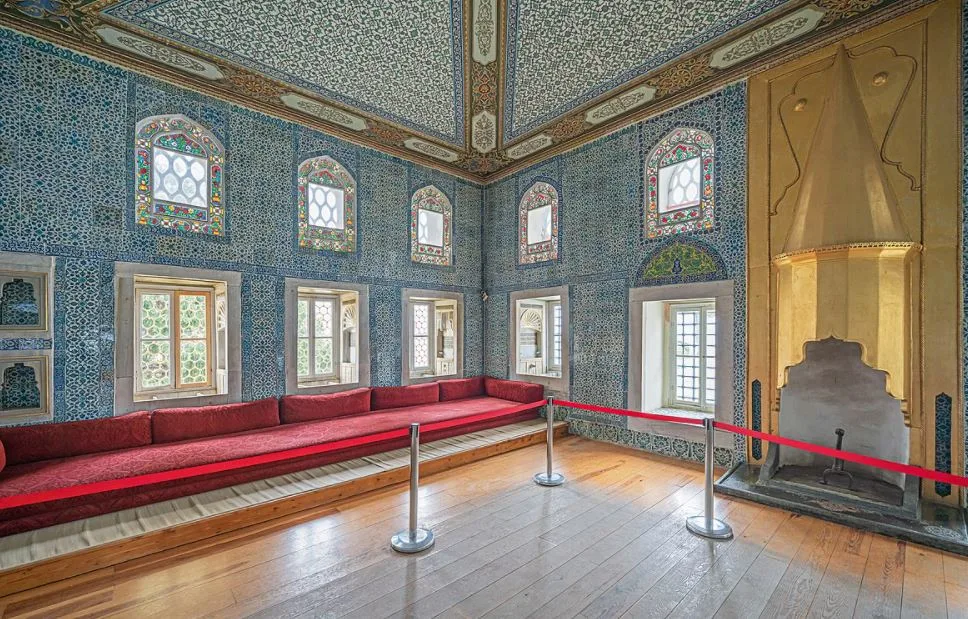
15. The palace was turned into a museum in the year 1924
The Ottoman Empire ended in the year 1923 and the Palace ended up being transformed into a museum the year after. The structure is now referred to as the “Topkapı Palace Museum” and is administered by the Ministry of Culture and Tourism of Turkey.
The amazing complex is also listed as a UNESCO World Heritage site since the year 1985 as one of the Historic Areas of Istanbul.
Apart from visiting the most important buildings and rooms of the Palace, you can also admire the numerous items on display, ranging from the Spoonmaker’s Diamond to the Topkapi Dagger and countless items dating back to the Ottoman Empire.
This makes the Topkapi Palace a must-do attraction on your Istanbul Bucket list, that’s for sure!

